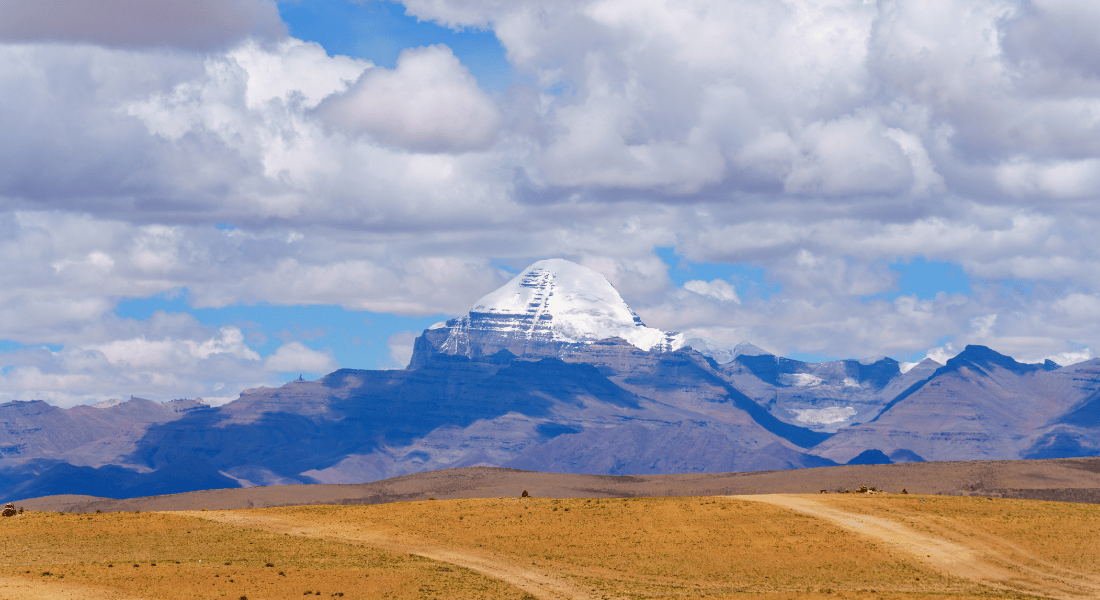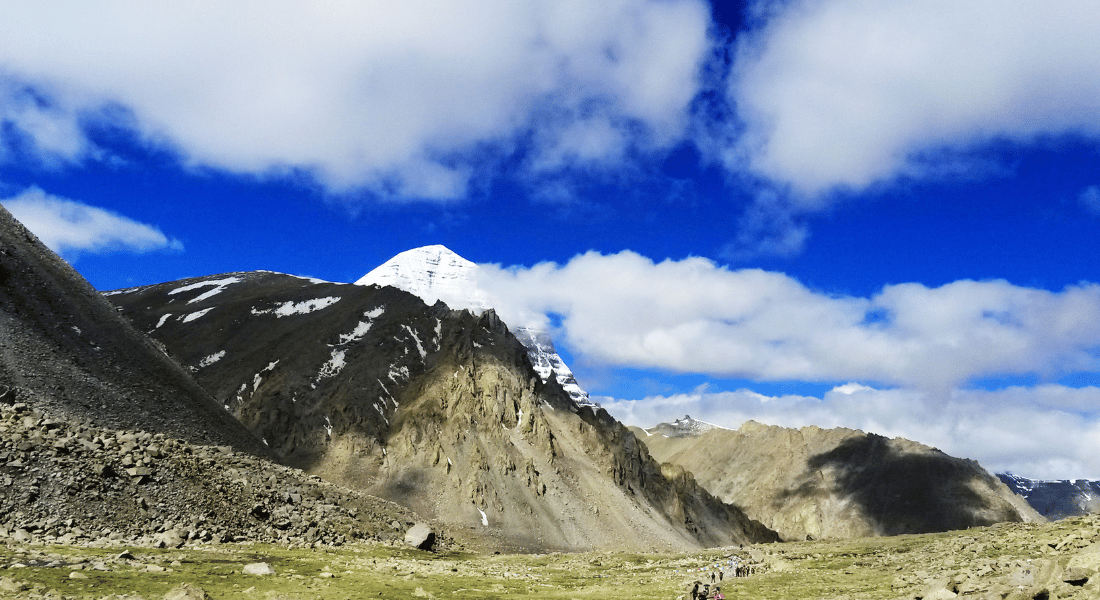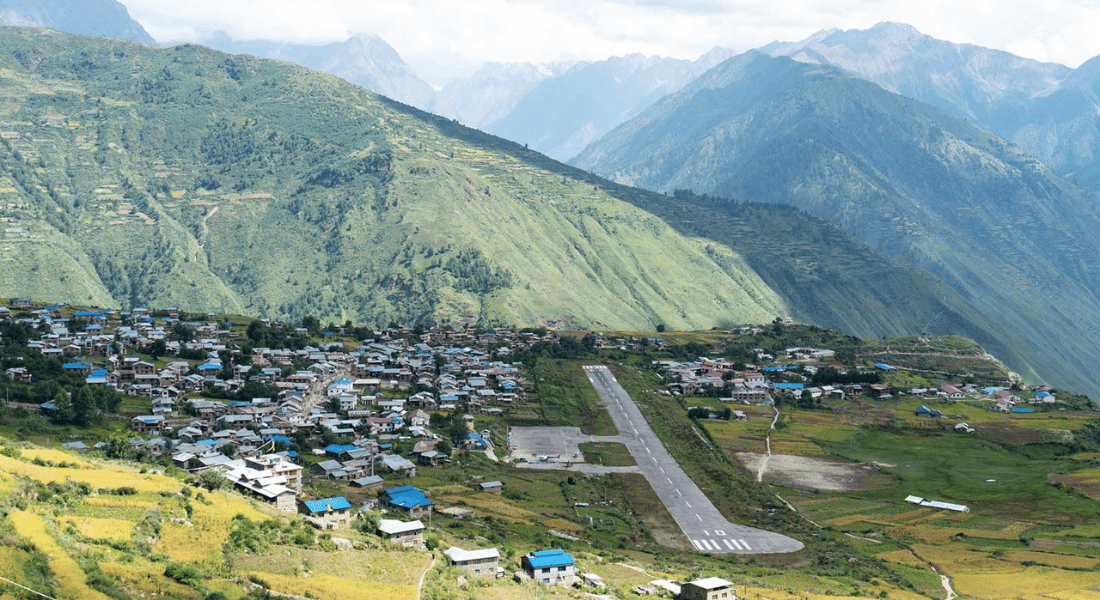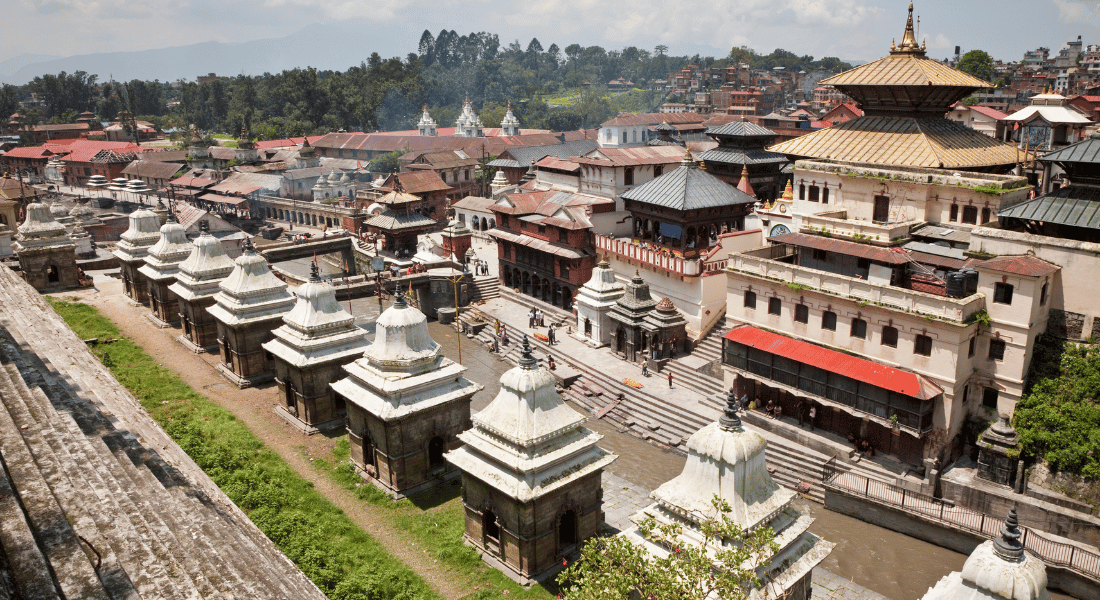The journey to Kailash Mansarovar, also known as the Kailash Mansarovar Yatra, is a liberating pilgrimage opportunity for many. Every year thousands of people commence this yatra for getting blessings from their gods as well as finding peace within themselves. The journey to this remote and mysterious location is not only a physically challenging activity but also a deeply transformational spiritual experience. Pilgrims who come to this sacred place believe that circumambulating around Mount Kailash and taking a holy dip in the sacred waters of Mansarovar can cleanse sins, bring good fortune, and give a way for the ultimate spiritual freedom.
Kailash Mansarovar has been a major pilgrimage site for centuries, attracting pilgrims as well as nature and adventure enthusiasts from all over the world. Mount Kailash and Lake Mansarovar hold great spiritual significance for Hinduism, Buddhism, Jainism, and Bon religion. Kailash Mansarovar, one of the holiest locations on Earth, symbolizes spiritual power and significant religious significance. Mount Kailash is considered as the sacred abode of Lord Shiva, whereas Lake Mansarovar is considered as the creation of Lord Brahma in Hinduism. Similarly, they have their own significance and scaredness according to other faiths as well.
Since the journey to Kailash Mansarovar demands a combination of both physical endurance as well as well thought out planning, this “How to Reach Kailash Mansarovar” guide is here to help you in every aspect of the yatra. From navigating the routes and means of transportation of the journey to spiritual significance of the journey and essential preparation guides, this blog will provide you with all the information you will need to start this once in a lifetime journey. Whether one is driven by faith, curiosity, or seeking an adventure, Kailash Mansarovar offers a journey that promises to transform one's life.
Also read: Mount Kailash - Abode of Lord Shiva
What is Kailash Mansarovar?
Kailash Mansarovar is a highly revered pilgrimage site located in the remote Tibetan region. Kailash Mansarovar refers to the sacred region encompassing Kailash Parvat and Mansarovar Lake, both of which are located in the remote and majestic landscape of the Tibetan Plateau. This region is not only a geographical marvel but also a profound spiritual destination, revered across multiple religions. For centuries, it has been a place of pilgrimage, meditation, and spiritual awakening.
Geography
Mount Kailash of the Kailash Mansarovar region, is the heart of this region with its towering height of 6,638 meters (21,778 feet). Unlike other Himalayan peaks, Mount Kailash is a unique shaped peak, featuring 4 different faces that align with the cardinal direction (north, south, east, and west). The mountain top is capped with snow throughout the year and its symmetry and isolation from other surrounding peaks add to its appeal. Mansarovar Lake, located southeast of Mount Kailash is one of the highest freshwater lakes in the world, with an elevation of approximately 4,590 meters (15,060 feet). An area of about 320 sq km is covered by the lake and has a maximum depth of 90 meters. The source of the water of Lake Mansarovar is the glaciers of Mount Kailash and other nearby mountains, and its water remains crystal clear, showcasing the pure environment that surrounds it.
The region's harsh, high-altitude environment is characterized by thin air, cold temperatures, and barren landscapes. Despite these challenging conditions, Kailash Mansarovar is a beacon for pilgrims and trekkers drawn to its spiritual and natural beauty.
Significance
The significance of Kailash Mansarovar is deeply rooted in the spiritual traditions of Hinduism, Buddhism, Jainism, and Bon, each of which views the region with profound reverence.
-
Hinduism: In Hindu tradition, Mount Kailash is considered the abode of Lord Shiva, one of the principal deities in Hinduism. Shiva is often depicted in deep meditation at the summit of the mountain. Mansarovar Lake, on the other hand, is believed to have been created by Lord Brahma, and taking a dip in its waters is said to cleanse sins and purify the soul. The circumambulation (parikrama/kora) of Mount Kailash is an act of deep devotion, undertaken by thousands of pilgrims each year despite the physical challenges.
-
Buddhism: Buddhists regard Mount Kailash as the home of Demchok (Chakrasamvara), a wrathful deity representing supreme bliss. The mountain is also associated with the concept of cosmic mandalas, and its four faces are believed to correspond to the four elements—earth, water, fire, and air. Mansarovar Lake is known as "Mapham Yutso" in Tibetan and is considered a source of spiritual power and a place for meditation. Pilgrims from around the world perform the kora, a ritual circumambulation of the mountain, to gain merit and cleanse negative karma.
-
Jainism: In Jainism, Mount Kailash is known as Ashtapada, the place where Rishabhadeva, the first Tirthankara and founder of Jainism, attained liberation (moksha). For Jains, the mountain is a sacred symbol of spiritual liberation and is revered as one of the holiest sites in their tradition.
-
Bon: The indigenous Bon religion of Tibet predates Buddhism and also holds Mount Kailash in high regard. Bonpos believe the mountain to be the sacred nine-story Swastika Mountain, the axis mundi or center of the universe. The circumambulation of Kailash is seen as a journey toward spiritual enlightenment.
Mansarovar Lake is similarly venerated across these traditions. Its waters are considered life-giving and pure, with the power to heal both physical and spiritual ailments. The lake is also believed to be the source of several major rivers in Asia, including the Indus, Sutlej, Brahmaputra, and Karnali rivers, further emphasizing its significance as a life-sustaining force.
Related Read: Kailash Mansarovar Yatra
Preparing for the Journey
Many people would love to go to Kailash Mansarovar but may not know about the essentials for the journey like the documents that are required for the yatra, health and fitness requirements and packing essentials. These small details would be crucial for the upcoming journey and will help you plan your trip effectively for your overall experience. The pilgrimage to Kailash Mansarovar is a spiritually and physically demanding journey that requires meticulous preparation. Whether it is taken for religious purposes or for adventure, this journey to the sacred Mount Kailash and the pristine Lake Mansarovar demands attention to detail in every aspect of planning. Two critical areas of preparation include ensuring all necessary documents are in order and focusing on health and fitness.
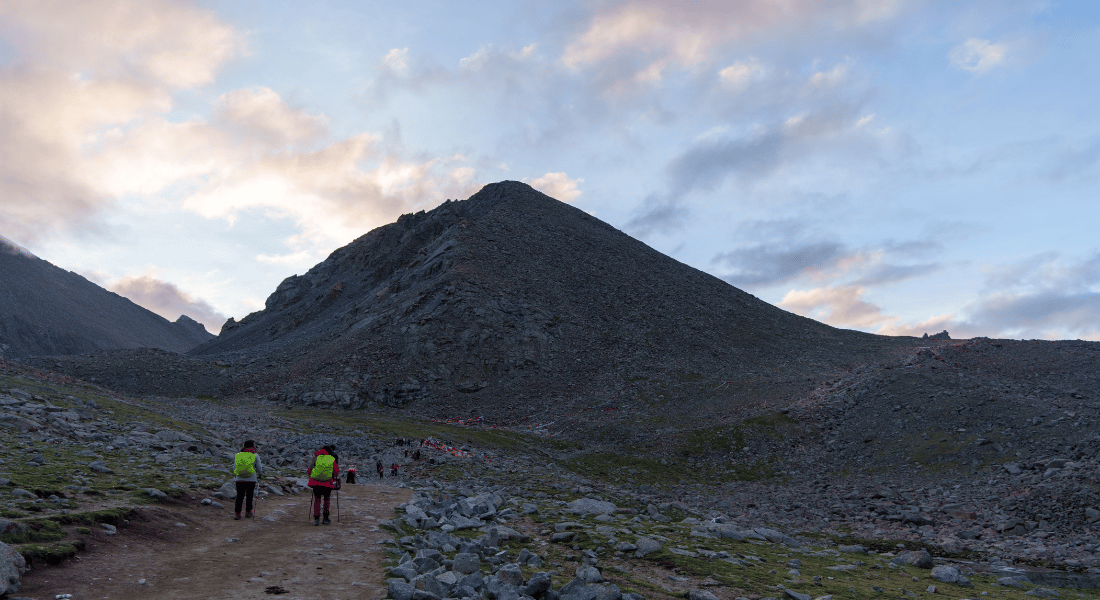
Documents Required
Kailash Mansarovar Yatra requires careful attention to the documentation process, as this pilgrimage goes through multiple international borders and involves travel through remote regions with strict governmental regulations. In order to participate in the Kailash Mansarovar Yatra, you need to prepare some documents to verify your participation in the yatra. Here is a list of required documents you will need for your sacred journey to Kailash Mansarovar:
|
Required Documents |
|
Passport and Some Photocopies |
|
Recent Photograph (White Background) |
|
Nepal Visa (Besides Indian Citizen) |
|
Chinese Visa |
|
Tibet Travel Permit |
Health and Fitness
The pilgrimage to Kailash Mansarovar is not just a test of spiritual resolve but also a significant physical challenge. The journey takes pilgrims to altitudes of over 15,000 feet, where the air is thin, and weather conditions can be harsh. Preparing one's body and mind for this journey is crucial for a safe and fulfilling experience.
-
Physical Fitness: Months before the journey, pilgrims should begin a regular exercise routine focusing on cardiovascular endurance, strength, and flexibility. Activities like walking, jogging, swimming, and cycling can improve stamina. Additionally, exercises targeting leg muscles, such as squats and lunges, are beneficial given the steep terrain.
-
Pre Health Checkup: In order to have a safe journey, pilgrims must keep their health in check. It is highly recommended to the travelers to consult with their doctors before finalizing their journey to Kailash Mansarovar. Pre health check ups can reduce the risk that may occur during the yatra.
-
Altitude Acclimatization: A crucial step when traveling to high altitudes to prevent altitude sickness is Acclimatization. which can be life-threatening. Spending a few days at intermediate altitudes like Kyrong and Saga before reaching Kailash Mansarovar can help the body adjust to the lower oxygen levels. Some pilgrims may also consider using altitude sickness medications, but these should be taken under medical supervision.
-
Diet and Nutrition: A balanced diet rich in proteins, vitamins, and minerals is essential to build the strength and immunity needed for the journey. Hydration is equally important, and pilgrims should increase their water intake well before the yatra to maintain optimal hydration levels during the trek.
-
Mental Preparation: The mental demands of the yatra are as significant as the physical ones. The isolation, challenging weather, and rigorous trek can take a toll on your mental health. Practicing mindfulness, meditation, or yoga can help build the mental resilience needed to deal with the stress and enhance the spiritual experience of the pilgrimage.
-
Medical Supplies: Pilgrims should carry a personal medical kit containing basic first-aid items, pain relievers, antiseptic creams, and altitude sickness medication. It's also advisable to include personal prescriptions and over-the-counter medications for common ailments like colds, headaches, or digestive issues.
Packing Essentials
Packing for the Kailash Mansarovar Yatra is a critical aspect of preparation, as the journey takes pilgrims through challenging environments, including high altitudes, extreme weather conditions, and remote areas with limited access to amenities. A well-thought-out packing list ensures that pilgrims are well-equipped to handle these challenges while staying comfortable and safe throughout the journey. Here is a list of some of the essential items that you need to pack for your Kailash Mansarovar Yatra:
|
Category |
Items |
|
Clothing and Footwears |
|
|
Equipment and Gears |
|
|
Health and Hygiene |
|
|
Miscellaneous Items |
|
Learn More: Kailash Mansarovar Yatra Packing List Suggestion
Kailash Mansarovar Yatra Routes
The Kailash Mansarovar Yatra offers multiple routes to reach the sacred Kailash Parvat and Lake Mansarovar. Each route varies in duration, transportation mode, and level of physical challenge they present. Pilgrims can choose between traveling fully by road or a combination of air and road travel, depending on their personal preferences, physical fitness, and available time. A detailed description of the different routes are given below:
Kailash Mansarovar by Road from Nepal
The road journey to Kailash Mansarovar is the traditional and most popular route, offering pilgrims a deeply immersive experience as they traverse through the varied landscapes of Nepal. This route is often taken by those who seek a more physically challenging pilgrimage and wish to experience the gradual change in topography and culture along the way. It begins in Kathmandu and takes pilgrims through the diverse terrains of Nepal to the border at Kyirong. After crossing the border, the journey continues through the Tibetan plateau to reach Lake Mansarovar and Mount Kailash.
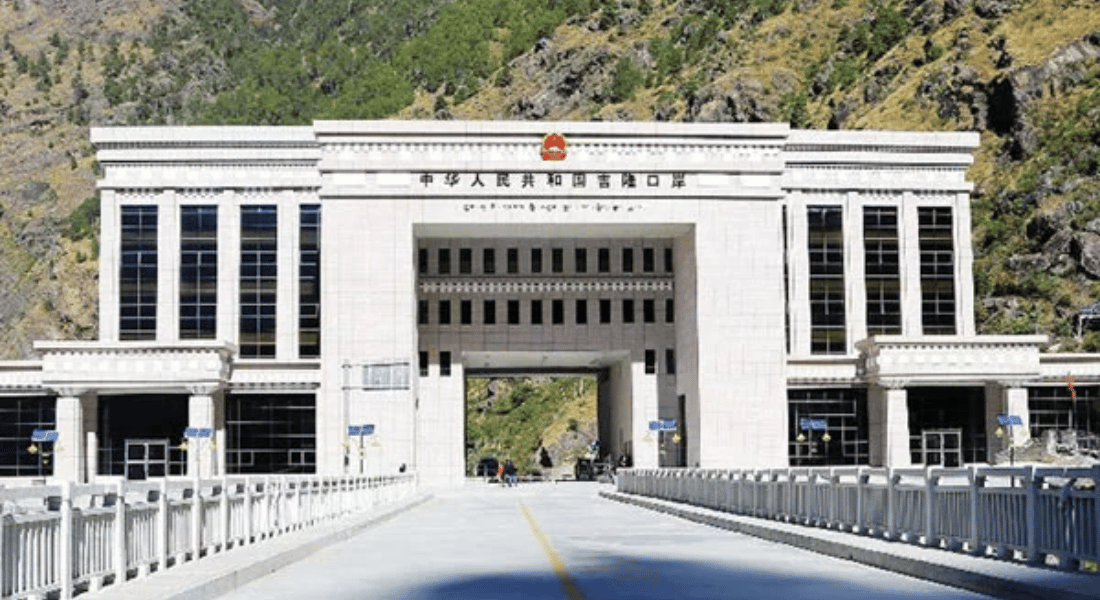
Route Table
The route for Kailash Mansarovar Yatra by Road from Nepal is:
|
Leg |
Distance |
Description |
|
Kathmandu to Dhunche/Syabrubesi/Timure |
117 km - 150 km |
Start your journey from Kathmandu, driving through the scenic Himalayan foothills to reach the border area. |
|
Timure to Kyirong |
41.7 km |
Cross the Nepal-Tibet border at Rasuwagadhi and continue to Kyirong. |
|
Kyirong to Saga |
155 km |
Drive across the Tibetan plateau, passing through small villages and vast landscapes. |
|
Saga to Mansarovar |
450 km |
Continue the journey to the sacred Lake Mansarovar, offering breathtaking views of the Tibetan plateau. |
|
Mansarovar to Darchen |
35 km |
A short drive to Darchen, the base camp for the Kailash Kora. |
|
Darchen to Yam Dwar |
7 km |
Drive to Yam Dwar, the starting point of the Kailash Kora. |
|
Kailash Kora |
~52 km |
Undertake the sacred circumambulation (Kora) of Mount Kailash over two days. |
|
Zuthulphuk to Saga |
420 km |
Retrace your steps back to Saga after completing the Kora. |
|
Saga to Kyirong |
155 km |
Continue the return journey to Kyirong. |
|
Kyirong to Kathmandu |
152 km |
Cross the border back into Nepal and return to Kathmandu, completing the Yatra. |
Advantage
-
Cultural and Scenic Experience: The route through Nepal offers rich cultural encounters and scenic beauty, with views of the Himalayas and Tibetan plateau.
-
Cost-Effective: Traveling by road is generally more affordable compared to air or helicopter routes.
-
Accessible: This route is accessible to a wide range of pilgrims, providing an opportunity to acclimatize gradually to the high altitude.
Kailash Mansarovar by Air from Nepal
For those seeking a quicker and more comfortable journey, the Kailash Mansarovar Yatra by Air is an excellent option. This route significantly reduces travel time and physical strain, making it accessible to a broader range of pilgrims. Air travel can be done usually by two means; one by helicopter and one by flight.
Combination of Helicopter and Road
The Combination of Helicopter and Road route for the Kailash Mansarovar Yatra offers a balanced approach, reducing travel time while still providing the spiritual experience of a road journey and the adventure of trekking around Mount Kailash.
Route Table
Here is the route of Kailash Mansarovar Yatra by helicopter and road journey:
|
Leg |
Distance |
Description |
|
Kathmandu to Nepalgunj |
366 km |
Fly from Kathmandu to Nepalgunj, a border town in southwestern Nepal. |
|
Nepalgunj to Simikot |
291 km |
Take a short flight from Nepalgunj to Simikot, a remote town in the mountainous region. |
|
Simikot to Hilsa |
24 km |
Fly by helicopter to Hilsa, near the Nepal-Tibet border. |
|
Hilsa to Taklakot |
27 km |
After landing in Hilsa, drive to Taklakot (also known as Purang) in Tibet for acclimatization. |
|
Taklakot to Mansarovar |
81 km |
Drive through the Tibetan plateau to the sacred Lake Mansarovar. |
|
Mansarovar to Yam Dwar |
42 km |
Drive to Yama Dwara, the gateway to the Kailash Kora. |
|
Kailash Kora |
~52 km |
Undertake the sacred 3-day trek around Mount Kailash, starting from Darchen. |
|
Zuthulpuk to Darchen to Hilsa |
57 km |
After completing the Kora, drive back to Darchen and then to Hilsa. |
|
Hilsa to Simikot |
24 km |
Helicopter ride back to Simikot. |
|
Simikot to Nepalgunj to Kathmandu |
657 km |
Fly from Simikot to Nepalgunj and then to Kathmandu. |
Advantage
-
Time-Efficient: This route significantly reduces the travel time, making it ideal for those with time constraints.
-
Moderate Physical Demand: The use of helicopters for difficult terrains and flights for long distances reduces physical strain, making the pilgrimage accessible to a wider range of people.
-
Scenic Aerial Views: The helicopter flights provide stunning aerial views of the Himalayas and the Tibetan plateau, enhancing the overall experience.
Combination of Flight and Road
The Combination of Flight and Road route for the Kailash Mansarovar Yatra offers a balanced journey that combines the convenience of flying with the immersive experience of road travel. This route allows pilgrims to explore the rich culture of Tibet while gradually acclimatizing to the high altitudes.
Route Table
Here is the route of Kailash Mansarovar Yatra by flight and road journey:
|
Leg |
Distance |
Description |
|
Kathmandu to Lhasa |
609 km |
Fly from Kathmandu to Lhasa, the cultural and spiritual heart of Tibet |
|
Lhasa to Shigatse |
266 km |
Drive through the scenic Tibetan plateau to Shigatse, Tibet's second-largest city. |
|
Shigatse to Tingri |
237 km |
Continue the journey by road, driving to Tingri, a town known for its views of Mount Everest. |
|
Tingri to Saga |
295 km |
Drive to Saga, a small town that serves as a key stopover on the way to Mansarovar. |
|
Saga to Mansarovar |
450 km |
Journey across the Tibetan plateau to reach the sacred Lake Mansarovar. |
|
Mansarovar to Darchen |
35 km |
A short drive from Mansarovar to Darchen, the base camp for the Kailash Kora. |
|
Kailash Kora |
~52 km |
Undertake the 3-day sacred circumambulation (Kora) of Mount Kailash, starting from Darchen. |
|
Zuthulpuk to Darchen |
12 km |
Complete the Kora by trekking to Zuthulpuk and then driving back to Darchen. |
|
Darchen to Kyriong |
635 km |
Drive to Kyirong, the border town between Tibet and Nepal. |
|
Kyirong to Kathmandu |
152 km |
Cross the border into Nepal and drive back to Kathmandu, completing the Yatra. |
Advantage
-
Cultural Exploration: Starting in Lhasa provides an opportunity to explore the rich Tibetan culture and spirituality before embarking on the Yatra.
-
Gradual Acclimatization: The combination of road and flight travel helps in gradual acclimatization, reducing the risk of altitude sickness.
-
Balanced Journey: This route offers a mix of convenience and spiritual immersion, making it ideal for those who want to experience the journey without enduring overly long road trips.
Kailash Kora Routes
The Kailash Kora is the circumambulation around Mount Kailash, a spiritually significant act believed to cleanse the soul and bring one closer to divine powers. There are two main routes for the Kora, the Inner Kora and the Outer Kora, each offering a unique spiritual experience.
Outer Kora
The Outer Kora is the traditional circumambulation around Mount Kailash, a highly revered pilgrimage for many spiritual seekers. The route is challenging but accessible to most pilgrims, offering breathtaking views of the sacred mountain and the surrounding landscapes.

Route Table
Here is the route of Kailash Outer Kora (Parikrama):
|
Leg |
Distance |
Description |
|
Yama Dwar to Deruphuk |
8 km |
Start the Outer Kora from Yama Dwar, trekking to Deruphuk, offering breathtaking views of the north face of Mount Kailash. |
|
Deruphuk to Zuthulpuk |
22 km |
Continue the trek from Deruphuk to Zuthulpuk, crossing the Dolma La Pass, the highest and most challenging point of the Kora. |
|
Zuthulpuk to Darchen |
11 km |
Complete the Inner Kora with a trek back to Darchen, where the journey concludes. |
Advantage
-
Spiritual Significance: Completing the Outer Kora is considered a powerful spiritual act, believed to cleanse the soul and bring blessings.
-
Accessible Route: While challenging, this route is manageable for most pilgrims, making it a popular choice for those undertaking the Kailash Mansarovar Yatra.
-
Scenic Beauty: The trek offers unparalleled views of Mount Kailash and the surrounding Tibetan landscape, providing both a physical and spiritual journey.
Inner Kora
The Inner Kora is a more challenging and spiritually intense circumambulation around Mount Kailash, bringing pilgrims closer to the mountain than the Outer Kora. This route is less frequently undertaken but is considered highly auspicious and rewarding.

Route Table
Here is the route of Kailash Inner Kora (Parikrama):
|
Leg |
Distance |
Description |
|
Darchen to Ashtapad, Saptarishi Cave and 13 Golden Chortens Back to Darchen (Drive/Trek) |
~15 km |
Begin with a trek from Darchen to Ashtapad, Saptarishi Cave and 13 golden chortens, sacred sites offering close views of Mount Kailash, before returning to Darchen. |
|
Darchen to Deraphuk via Yama Dwar (Trek) |
12 km |
Trek from Yama Dwar to Deraphuk, passing through sacred terrain and offering stunning views of the north face of Mount Kailash. |
|
Deraphuk to Charan Sparsh Charan Return to Deraphuk |
7 km |
Undertake a challenging trek from Deraphuk to Charan Sparsh, a point close to the base of Mount Kailash, then return to Deraphuk for an overnight stay. |
|
Deraphuk to Zuthulpuk via Sanglam La Pass |
16 km |
It will be the final leg for the kora today. Trek on an off trail route towards Zuthulpuk via Sanglam La Pass. |
Advantage
-
Proximity to Mount Kailash: The Inner Kora brings pilgrims extremely close to the sacred mountain, providing a deep spiritual connection.
-
High Spiritual Merit: Completing the Inner Kora is considered one of the most spiritually rewarding acts, believed to bring immense blessings and purification.
-
Exclusive Experience: The Inner Kora is less traveled, offering a more serene and profound pilgrimage experience, away from the crowds of the Outer Kora.
-
All Faces of Mount Kailash: The Kailash Inner Kora let’s travelers get a glimpse of all the 4 faces of Mount Kailash which is not possible with Outer Kora.
Related Tour: Kailash Inner Kora Tour
How to reach Kailash Mansarovar from Delhi
Kailash Mansarovar, situated in the remote and sacred region of Tibet, is a revered destination for many spiritual seekers. Traveling from Delhi to this holy site can be accomplished through two main routes: by road and by air. Each option offers a unique experience and caters to different preferences for time and adventure.
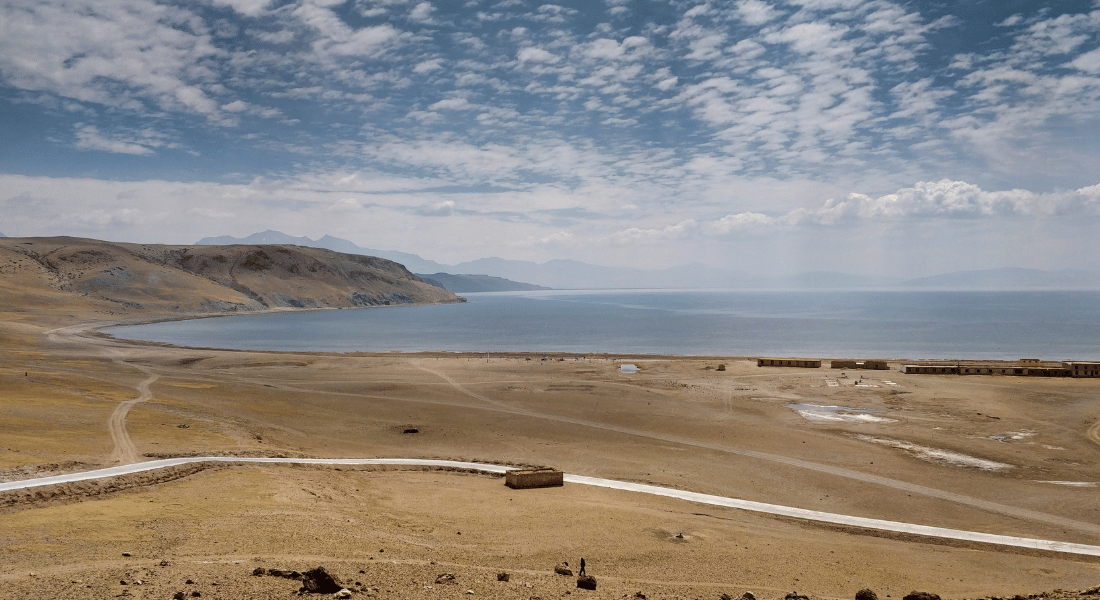
By Road
Traveling by road to Kailash Mansarovar from Delhi is a profound journey that combines the thrill of overland travel with the gradual acclimatization to high altitudes. This route takes you through picturesque landscapes of Nepal and Tibet, providing an immersive experience of the Himalayan region. The road journey typically involves long drives through rugged terrain and remote areas, culminating in a trek around the sacred Mount Kailash. It’s ideal for those who wish to experience the full adventure of the pilgrimage and enjoy the scenic beauty of the route.
Route Table
Here is the route for reaching Kailash Mansarovar from Delhi by road:
|
Leg |
Distance |
Description |
|
Delhi to Kathmandu |
1,200 km |
Travel from Delhi to Kathmandu by road, with the option to fly. |
|
Kathmandu to Dhunche/Syabrubesi/Timure |
150 km |
Drive towards the Nepal-Tibet border. |
|
Timure to Kyirong |
41.7 km |
Cross the border and continue to Kyirong in Tibet. |
|
Kyirong to Saga |
155 km |
Drive across the Tibetan plateau to Saga. |
|
Saga to Mansarovar |
450 km |
Journey to Lake Mansarovar, the pilgrimage’s focal point. |
|
Mansarovar to Darchen |
35 km |
A short drive to Darchen, the base camp for the Kailash Kora. |
|
Kailash Kora |
~52 km |
Undertake the Kailash Kora, trekking around Mount Kailash. |
|
Return Journey |
Similar distances |
Retrace the route back to Delhi. |
Advantage
-
Gradual Acclimatization: Ideal for adjusting to high altitudes.
-
Cultural Experience: A deep immersion in the landscapes and cultures of Nepal and Tibet.
By Air
For those seeking a quicker and more convenient route, flying to Kailash Mansarovar is the most efficient option. This approach involves a combination of flights and short drives, significantly reducing travel time compared to the road route. Pilgrims can fly from Delhi to Kathmandu and then take a series of connecting flights and helicopter rides to reach the Tibet border. Once in Tibet, a drive takes you to Lake Mansarovar, followed by the sacred trek around Mount Kailash. This route is suitable for those with limited time and who prefer a more comfortable and streamlined journey.
Route Table
Here is the route for reaching Kailash Mansarovar from Delhi by air:
|
Leg |
Distance |
Description |
|
Delhi to Kathmandu |
609 km |
Fly directly from Delhi to Kathmandu. |
|
Kathmandu to Nepalgunj |
366 km |
Fly to Nepalgunj in southwestern Nepal. |
|
Nepalgunj to Simikot |
291 km |
Take a flight from Nepalgunj to Simikot. |
|
Simikot to Hilsa |
24 km |
Helicopter ride from Simikot to Hilsa near the Tibet border. |
|
Hilsa to Taklakot |
27 km |
Drive from Hilsa to Taklakot in Tibet. |
|
Taklakot to Mansarovar |
81 km |
Drive to the sacred Lake Mansarovar. |
|
Mansarovar to Yam Dwar |
42 km |
Drive to Yama Dwara, the gateway to the Kailash Kora. |
|
Kailash Kora |
~52 km |
Complete the Kailash Kora trek around Mount Kailash. |
|
Return Journey |
Similar distances |
Return to Delhi via Hilsa, Simikot, Nepalgunj, and Kathmandu. |
Advantage
-
Time-Efficient: Significantly reduces travel time.
-
Comfortable Travel: Provides a quicker and more comfortable journey, with breathtaking aerial views.
Also Read: How much does Kailash Mansarovar Yatra Cost
How to reach Kailash Mansarovar from Kathmandu
Kailash Mansarovar, a revered pilgrimage site located in Tibet, can be reached from Kathmandu through two primary routes: by road and by air. Each route provides a different travel experience, catering to varying preferences for adventure, time, and convenience.
By Road
Traveling by road from Kathmandu to Kailash Mansarovar is an adventurous journey through the Himalayan foothills and Tibetan plateau. This route provides a comprehensive overland experience, allowing pilgrims to gradually acclimatize to the high altitudes and absorb the breathtaking landscapes of Nepal and Tibet. The journey involves crossing the Nepal-Tibet border and traversing rugged terrains, making it an ideal option for those seeking an immersive and scenic pilgrimage experience.
Route Table
Here is the route for reaching Kailash Mansarovar from Kathmandu by road:
|
Leg |
Distance |
Description |
|
Kathmandu to Dhunche/Syabrubesi/Timure |
150 km |
Drive to the Nepal-Tibet border, enjoying scenic Himalayan views. |
|
Timure to Kyirong |
41.7 km |
Cross the border and drive to Kyirong in Tibet. |
|
Kyirong to Saga |
155 km |
Drive across the Tibetan plateau to Saga. |
|
Saga to Mansarovar |
450 km |
Continue driving to Lake Mansarovar, the pilgrimage’s focal point. |
|
Mansarovar to Darchen |
35 km |
A short drive to Darchen, the base camp for the Kailash Kora. |
|
Mansarovar to Kailash Kora |
~52 km |
Undertake the Kailash Kora trek around Mount Kailash. |
|
Return Journey |
Similar distance |
Retrace the route back to Kathmandu. |
Advantage
-
Gradual Acclimatization: The road journey allows for a gradual adjustment to high altitudes, reducing the risk of altitude sickness.
-
Cultural and Scenic Experience: Provides a rich experience of the landscapes and cultures of Nepal and Tibet, offering a more immersive pilgrimage.
By Air
Flying from Kathmandu to Kailash Mansarovar offers a quicker and more comfortable alternative, combining flights with short drives and helicopter rides. This route minimizes travel time and provides a more efficient way to reach the sacred site, making it ideal for those with time constraints or who prefer a streamlined travel experience.
Route Table
Here is the route for reaching Kailash Mansarovar from Kathmandu by air:
|
Leg |
Distance |
Description |
|
Kathmandu to Nepalgunj |
366 km |
Fly from Kathmandu to Nepalgunj in southwestern Nepal. |
|
Nepalgunj to Simikot |
291 km |
Take a flight from Nepalgunj to Simikot. |
|
Simikot to Hilsa |
24 km |
Helicopter ride from Simikot to Hilsa near the Tibet border. |
|
Hilsa to Taklakot |
27 km |
Drive from Hilsa to Taklakot in Tibet. |
|
Taklakot to Mansarovar |
81 km |
Drive to Lake Mansarovar. |
|
Mansarovar to Yam Dwar |
42 km |
Drive to Yama Dwara, the gateway to the Kailash Kora. |
|
Mansarovar to Kailash Kora |
~52 km |
Complete the Kailash Kora trek around Mount Kailash. |
|
Return Journey |
Similar distances |
Return to Kathmandu via Hilsa, Simikot, and Nepalgunj. |
Advantage
-
Time-Efficient: Significantly reduces travel time compared to the road route.
-
Comfort and Convenience: Offers a more comfortable journey with stunning aerial views and a streamlined travel process.
Alternatively you can do Kailash Mansarovar Yatra by flight Via Lhasa also.
Best Time to Visit Kailash Mansarovar
Visiting Kailash Mansarovar, requires careful consideration of the timing due to the region's extreme weather conditions and high altitude. The best time to embark on this sacred journey depends on various factors including weather, accessibility, and personal comfort.
-
May to Early June: The season starts with fewer crowds and cooler temperatures. Snow may still be present in some areas, but the roads are becoming passable.
-
June to August: This is the peak season, with stable weather and many pilgrims. It’s lively but can have occasional rain showers.
-
September: Early autumn offers clear skies, fewer crowds, and cooler temperatures. It’s an excellent time for photography and a quieter experience.
Visiting outside this period (October to April) is not recommended due to harsh winter conditions and inaccessible routes.
Learn More: Best time to visit Kailash Mansarovar
Recommended Packages
Here are some of our most popular tour packages to Kailash Mansarovar with varieties for comfort, accessibility and budget.
Kailash Mansarovar Yatra by Drive
The Kailash Mansarovar Yatra, starting from Nepal through Kyirong, offers a spiritually enriching journey through the Tibetan plateau. This trek is a blend of natural beauty and spiritual discovery, centered around the sacred Mount Kailash and Mansarovar Lake. The journey begins in Kathmandu, with a scenic drive through valleys and mountains, leading to the Tibetan border town of Kyirong. The pilgrimage is both awe-inspiring and challenging, with high altitudes, unpredictable weather, and basic facilities. The best time to visit is from May to September, offering favorable weather for this transformative spiritual experience.
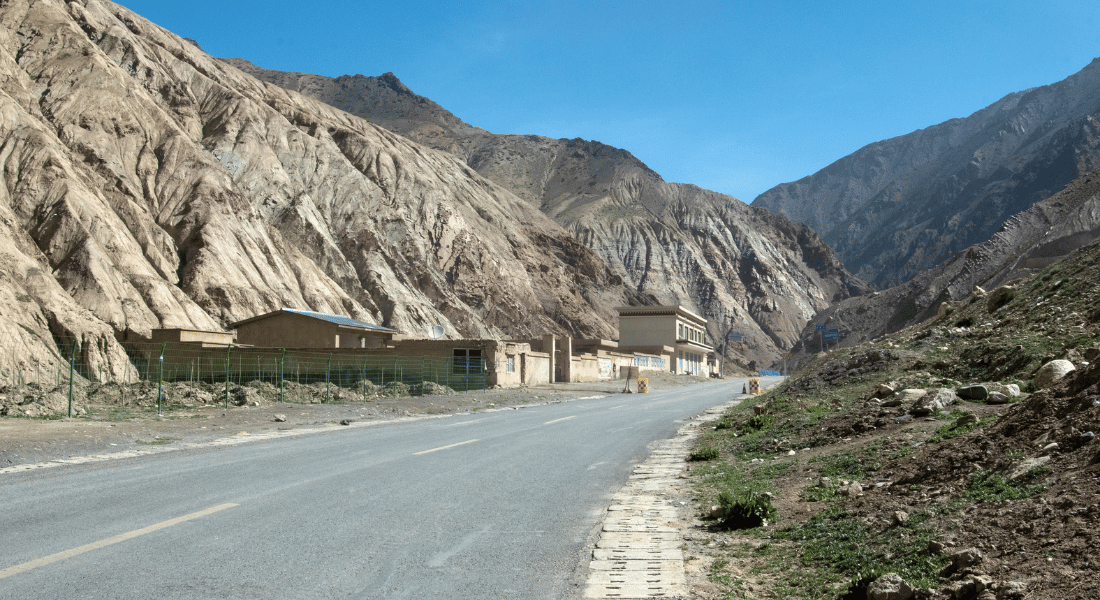
Outline Itinerary
Here is an outline itinerary of Kailash Mansarovar Yatra by Drive via Kyirong:
|
Day 01: Kathmandu Arrival. |
|
Day 02: Kathmandu Sightseeing, Visa Application. |
|
Day 03: Bhaktapur Sightseeing. |
|
Day 04: Chandragiri Sightseeing. |
|
Day 05: Packing and Final Preparation. (Buffer Day) |
|
Day 06: Drive to Dhunche or Syabrubesi or Timure. |
|
Day 07: Drive to Kyirong. (2850 m) |
|
Day 08: Drive to Saga. (4500m) |
|
Day 09: Drive to Lake Mansarovar. (4650m) |
|
Day 10: Drive to Darchen. (4700 m) |
|
Day 11: Drive to Yama Dwar, Trek to Deraphuk. (5050 m) |
|
Day 12: Trek to Zuthulpuk. (4800 m) |
|
Day 13: Zuthulpuk to Saga. (4500 m) |
|
Day 14: Drive back to Kyirong. (2850M) |
|
Day 15: Drive to Kathmandu. (1400m) |
|
Day 16: Departure. |
Learn More: Kailash Mansarovar Yatra by Drive Via Kyirong
Kailash Mansarovar Yatra by Helicopter
Kailash Mansarovar Yatra by helicopter is a spiritual tour package which fulfills your thirst of visiting Mt. Kailash and holy lake Mansarovar. This is an easier and faster way to complete the tour. It is preferable for elders as well as people who are physically weak to move on difficult terrain of Kailash Mansarovar Yatra. The helicopter journey covers distance till Nepalgunj on land then to Hilsa by Helicopter and then by a drive to Manasarovar.
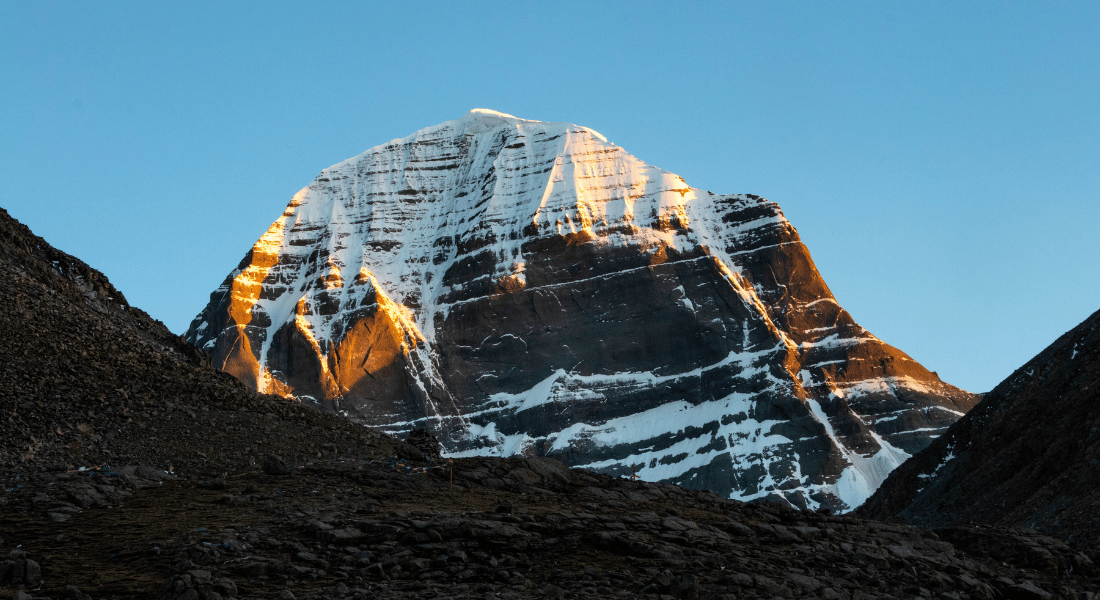
Outline Itinerary
Here is an outline itinerary of Kailash Mansarovar Yatra by Helicopter from Hilsa:
|
Day 01: Arrive in Kathmandu. (1400m) |
|
Day 02: Kathmandu Sightseeing, Visa Application. |
|
Day 03: Bhaktapur Sightseeing. |
|
Day 04: Chandragiri Sightseeing. |
|
Day 05: Packing, Fly to Nepalgunj. |
|
Day 06: Fly from Nepalgunj to Simikot. (2910m) |
|
Day 07: Simikot - Hilsa - Taklakot. (4025 m) |
|
Day 08: At Taklakot – Rest Day Full Day – Free for Acclimatization. |
|
Day 09: Drive from Taklakot to Lake Mansarovar. (4550m) |
|
Day 10: Drive to Yama Dwara Trek to Deraphuk. (4909m) |
|
Day 11: Trek to Zuthulpuk. (4820 m) 4760 m) |
|
Day 12: Zuthulpuk to Hilsa or Simikot. |
|
Day 13: Hilas to Simikot, Fly back to Kathmandu Via Nepalgunj |
|
Day 14: Transfer to Airport. |
Learn More: Kailash Mansarovar Yatra by Helicopter
Kailash Mansarovar Yatra Private Tour
The Kailash Mansarovar Yatra Private Tour offers a personalized 16-day spiritual journey to the sacred Mount Kailash and Mansarovar Lake, significant to Hindus, Buddhists, Jains, and Bon followers. Starting and ending in Kathmandu, Nepal, the tour includes sightseeing in Kathmandu, a scenic drive through the Tibetan landscape, and a challenging trek through the Himalayas, including the Dolma La Pass at 5,600 meters. The private tour allows flexibility in itinerary, pace, and accommodations, enhancing comfort and spiritual connection. Major attractions include Kathmandu's cultural sites, the Tibetan town of Darchen, and the Kora (circumambulation) around Mount Kailash. The tour provides a transformative experience, combining physical endurance with deep spiritual significance.

Outline Itinerary
Here is an outline itinerary of Kailash Mansarovar Yatra by road via Kyirong Border:
|
Day 01: Kathmandu Arrival. |
|
Day 02: Kathmandu Sightseeing, Visa Application. |
|
Day 03: Bhaktapur Sightseeing, Nagarkot Stay. |
|
Day 04: Chandragiri Sightseeing. |
|
Day 05: Packing and Final Preparation. |
|
Day 06: Drive from Kathmandu to Dhunche or Syabrubesi or Timure. |
|
Day 07: Drive to Kyirong. |
|
Day 08: Drive to Saga. |
|
Day 09: Drive to Lake Mansarovar. |
|
Day 10: Drive to Darchen. |
|
Day 11: Drive to Yama Dwar, Trek to Deraphuk. |
|
Day 12: Trek to Zuthulpuk. |
|
Day 13: Zuthulpuk to Saga. |
|
Day 14: Drive back to Kyirong. |
|
Day 15: Drive to Kathmandu. |
|
Day 16: Departure. |
Learn More: Kailash Mansarovar Private Tour
Kailash Mansarovar Yatra Via Lhasa
The Kailash Mansarovar Yatra via Lhasa is a 17-day spiritual journey that combines a cultural exploration of Nepal and Tibet with the breathtaking beauty of the Himalayas. Starting in Kathmandu, the tour includes visits to historic sites in Kathmandu and Bhaktapur, followed by a flight to Lhasa, Tibet's capital. In Lhasa, pilgrims explore significant Buddhist landmarks like the Potala Palace, Jokhang Temple, and Sera Monastery. The journey also includes a visit to Everest Base Camp on the Tibetan side, offering stunning views and an accessible route. The pilgrimage culminates in the circumambulation (Kora) of Mount Kailash and a visit to the sacred Lake Mansarovar. This unique yatra blends cultural immersion, spiritual reflection, and physical endurance, offering a transformative experience through both scenic landscapes and rich heritage.

Outline Itinerary
Here is an outline itinerary of Kailash Mansarovar Yatra by Flight to Lhasa:
|
Day 01: Arrive in Kathmandu. |
|
Day 02: Kathmandu Sightseeing. |
|
Day 03: Chandragiri and Patan Sightseeing. |
|
Day 04: Kathmandu Full Day Sightseeing. |
|
Day 05: Arrival in Lhasa, Lhasa Sightseeing. |
|
Day 06: Driving to Shigatse. |
|
Day 07: Shigatse to Saga. |
|
Day 08: Saga to Darchen, via Lake Mansarovar. (450 km) |
|
Day 09: Darchen-Deraphuk (Trek 22 km). |
|
Day 10: Deraphuk to Zuthulpuk (Trek 18 km). |
|
Day 11: Zuthulpuk to Darchen (Trek 12 km). |
|
Day 12: Darchen to Manasarovar (60 km). |
|
Day 13: Lake Manasarovar to Saga. |
|
Day 14: Drive from Saga to Shigatse (470 km). |
|
Day 15: Drive from Shigatse to Lhasa (280 km). |
|
Day 16: Fly from Lhasa to Kathmandu. |
|
Day 17: Departure. |
Learn More: Kailash Mansarovar Yatra Via Lhasa
Conclusion
Reaching Kailash Mansarovar is a journey that combines spiritual significance with awe-inspiring natural beauty. Whether you choose to travel by road, air, or a combination of both, each route offers unique experiences and challenges. From the bustling streets of Kathmandu to the serene, sacred shores of Lake Mansarovar, every step of the journey is filled with profound meaning and breathtaking vistas.
As you prepare for this pilgrimage, ensure that you're well-equipped, both physically and mentally. Proper planning, including securing the necessary permits, packing essential items, and preparing for high altitudes, will make your journey smoother and more enjoyable. Whether starting from Delhi or Kathmandu, knowing the best time to visit and choosing the right route can greatly enhance your experience.
The journey to Kailash Mansarovar is not just about reaching a destination—it's about the spiritual growth, inner peace, and deep connection you forge along the way. As you stand before the majestic Mount Kailash and the tranquil Lake Mansarovar, you'll find that the challenges and efforts are more than worth it, leaving you with memories and insights that last a lifetime.

